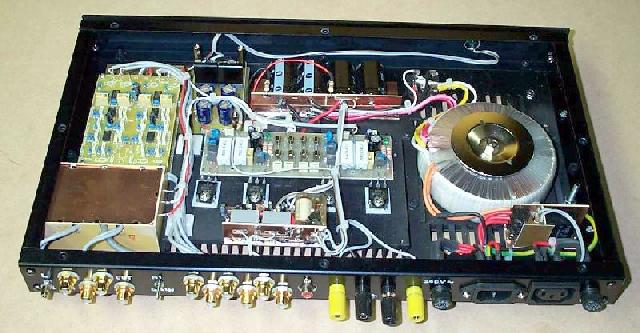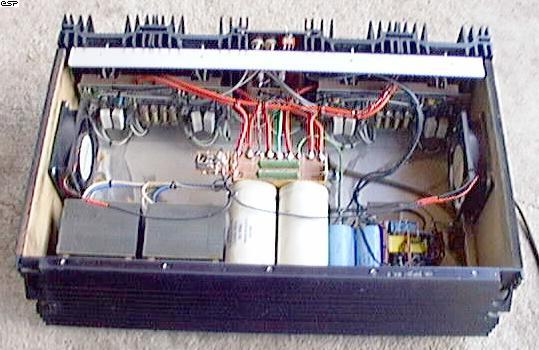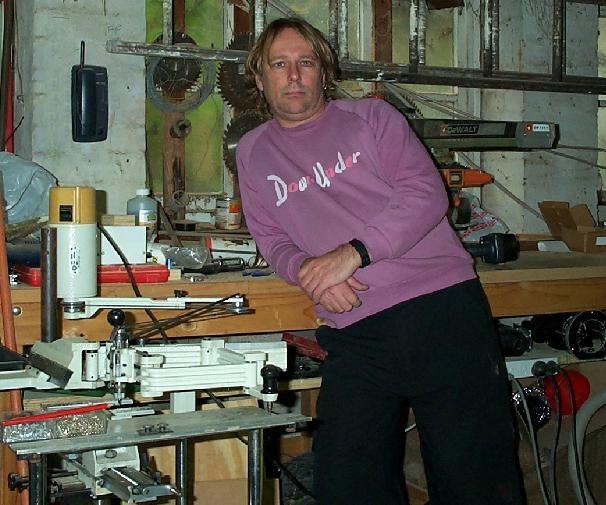

|
| Elliott Sound Products | Meet The Author |
I (Rod Elliott / aka 'the author' / aka 'rode') am based in Sydney (Australia), where I have lived for the majority of my life. I was in a small country town in my early childhood, and having revisited it not long ago, I am immensely pleased that I no longer live there. I have travelled extensively, both for work and pleasure, and this helps to balance one's view of the world. Australia is still my favourite place to live though  .
.
I am a QbE (Qualified by Experience) engineer - I do have formal qualifications, but they are relatively meaningless without experience and background - I consider them to be 'unimportant'. I have worked in the electronics, audio, computer and the telecommunications industries for over 50 years, and have developed a number of products which in their time received critical acclaim. At this stage of my career (Definition: to rush or hurtle with much speed but little or no control) I have no real desire to re-enter the rush and bustle of commercial enterprise, but one cannot still a lifelong passion.
As a result, I have produced these pages which have stimulated some more interest in the subject and hopefully introduce some new thinking and ideas into what was rapidly becoming a tired old brain (Oy! Who put that bit in? I never said that!).
In case anyone was wondering, I am not an 'audiophile' in the true sense of the term. I enjoy music immensely, and quality reproduction is naturally very important to me. Will I go off and spend hours, days or weeks testing different tweaks, cables or boxes of sand to 'damp vibrations' - no. I will spend a considerable amount of time experimenting with ideas or building something new to play with, and every so often I actually get a chance to just listen. This does not happen often enough, unfortunately, since I have a web page to feed and actual work to be done - these things take their toll on available time.
When I do get the chance to 'just listen', I do what a lot of audiophiles should do. I listen to the music. The reproducing system must be open, clean and transparent enough so that I don't hear it, only what comes from it. The extraordinary amounts of money that some people spend on systems is beyond my means, but what I listen to is what I have built myself, and I figure that a considerable sum has been saved in doing so. This is the major reason for the existence of The Audio Pages - to encourage others to do the same.
Apart from anything else, there is great satisfaction in building equipment. It may not have the glamorous appearance and prestige name of some of the 'finest equipment', but if it sounds great (to me and my friends - some of whom are audiophiles), then it is great. I don't need the brand names and fancy looks, I want good sound at a respectable price. This is something that is attainable for everyone who has the interest, and who decides to build their own equipment. Reading these pages won't hurt either  .
.
Anyway, enough drivel ...
My working life started as an apprentice electrical fitter/ mechanic at was was then the 'MWS&DB' (Metropolitan Water, Sewerage and Drainage Board - now 'Sydney Water'). I migrated to the electronics branch fairly early, as this was far more interesting. However, I was working with high voltage mains distribution, pumping station repairs (including complete re-wiring of an ageing pumping station) and many other aspects of power (at up to 11kV 3-phase systems!) and other things that most people never see. The electronics section started my lifelong fascination with electronics of all kinds, and the experience was invaluable because of the huge range of different things that needed fixing/ modifying or re-designing.
After that, for many years I had my own business, which was predominantly involved with musical instrument amps, PA systems and the like. During this period I also worked with a friend in a recording studio I designed and built, called 'Fly-By-Night Recordings'. We did a fair bit of advertising work (bleccht) and recorded a bunch of bands. One of the recordings we made has recently (well, not-so-recently as you read this) been re-mastered and released on CD, so the quality must have been good enough to warrant re-release.
I played in a few bands for a while (guitar, then bass), but soon realised that I was much better at the technical side than the musical. I still play for the fun of it, but alas, don't get as much time as I would like for that, either. I spent quite a while mixing for live bands, and toured Australia a few times - life on the road with a rock band has to be experienced to be believed!
I worked for a spell with (and helped to start) the SAE (School of Audio Engineering) - one of the most recognisable of the audio engineering schools, and was teaching students the basics of recording - how to mic a drum kit, mixing techniques and that sort of stuff. See the FAQ page for a bit more (and a useful link) on that topic. After that was a school that taught electronics (a privately run affair called The School of Electronics), where I taught the basics (and not so basics) of electronics, primarily analogue of course - digital was still in the future at the time. I still see some of my former students, and a great many of them are still involved in the electronics industry.
After leaving the telecommunications industry I did some consulting work for my former employer and others, and one particularly satisfying job was a complete rebuild of the electronic controller for an animation camera. This was when animation was still done using painted 'cells' with hundreds of different cells used even for a short piece of animation. Somewhat outside of my 'comfort zone', but the principles of electronics all still apply, only the execution and purpose are different. I also spent a while designing a very high-specification alarm system, which was intended to be used in prisons and other high-security environments.
I then spent some years at a computer company, initially in the repair centre (this was when it was still worthwhile to repair computer boards), then into a Research and Development role (as its sole team member!) designing 'bespoke' telecommunications products. I then moved to a dedicated telecommunications company, where after a while, I was back to teaching again - don't you just hate when that happens?
I have become my own boss again, so ESP is now a full time business - this is something I have been hankering for, and it has now happened - not without some trepidation of course, but I will be able to devote more time to the things I enjoy the most.
My personal system has been through many changes (as you would expect), but in its present form it was fairly stable for about 4 years (up until September '99, when some major changes were introduced).
I am using a modified fairly standard type CD player (premium Burr-Brown opamps instead of the originals), and also a direct drive turntable with a fairly old but still magnificent moving coil pickup cartridge. There is the mandatory cassette tape machine (rarely used except for some of my old live recordings), and an FM tuner. A DVD player is a stable part of the system - just don't assume that because they can play CDs that you should use one for this. They do it, but not as well as the 'real thing' (this depends on the DVD player, of course - some are outstanding!)
Nothing really special in the source department, but the preamp and control unit are of my own design, and the system has an inbuilt phase-coherent crossover network (at 300Hz and 3000Hz), feeding a triamped system using four of the 60W (P3A) amps (modified) described in the Project Pages. The Control Unit shown below does the following ...
I was using my valve preamp, but now use the Project 88 preamp, which I think actually sounds better, and is certainly less troublesome than anything that uses Chinese or Russian valves. This feeds directly into the crossover. It also allows me to use the phono preamp (the preamp unit does not have its own), and now everything is there.

As you can see from the photo, almost all of the circuitry uses the PCBs I offer for sale (the power amp is an early prototype of the P3A amp board). If you want to know what the valve preamp looks like (because this is what I used to use) have a look at the VP103 page.
The main power amp is something else again. I had actually forgotten how much work I put into the thing, and the insides surprised me when I took it apart to replace the input and output connectors.

As you can see, the power supply is a fairly robust affair. The two large transformers (there are two little ones for the preamp too) are 200VA each (400VA total) and were specially made to my design quite a few years ago. The amps are as described in my projects pages (the P3A amp), but have been upgraded, using 200W TO3 power transistors and run a +/- 40V supply, with 18,000uF of capacitance per side. The smaller electrolytics you can see on the right were for the preamp, but are no longer used. The amp can happily supply 70W into 8 Ohms from each of the 4 amps, and will do about 80W peak on normal program material.
The fans are thermostatically controlled, and only ever run when we get one of the famous Australian hot days. Because the power amp runs a fairly high quiescent current (around 80mA per amplifier), it gets rather warm even when idle, and the safety margin for temperature was not large enough for my liking.
All input sources (including the turntable, using the phono preamp in the new control unit), now go through my P88 preamp before the crossover, and that has all the characteristics one would desire - dead quiet, excellent imaging, etc.
The speakers and control unit are described in the My New Speaker Project article. This tells just about anything that you might want to know about them, so I shall not ramble on here. All electronics in the control unit (crossover, tweeter amp and phono preamplifier) are as described in the various published projects.
To combat the lack of low bass (< 50Hz with the new boxes), I am using an EAS (Electronically Assisted Sub-woofer) of my own design (seeProject 48 for details) which has extended the bottom end dramatically. Powered by a 400W Class-D amplifier, I can get -3dB at 15Hz or less, but raised this to 25Hz to prevent excessive cone excursions caused by assymmetrical signal waveforms (these shift the effective DC operating point). There is very little that is audible (or recorded) below 25Hz, and not being a great fan of pipe organ music, I don't think that I am missing much in the frequency range. The sub is now equalised with the P84 Subwoofer Equaliser, and is flat to 20Hz in my listening room.
The photo below shows the bench mount gear. There is also the mandatory collection of hand held meters - both analogue and digital, capacitance and inductance, etc. (not shown, 'cos they're boring  ).
).

From left to right, you can see my distortion meter (the large black box with big meter), and on top of that is an arbitrary waveform generator, frequency counter and tone-burst generator perched at the summit. Next is an audio generator (now well over 25 years old, and still going strong), then my digital oscilloscope. My ancient transistor tester is next, with a function generator on top of that. At the top of that stack is my quasi-parametric equaliser (with its back rudely turned!). Next in the line is a dual tracking power supply, with a combination test unit on top of it (audio generator, small power amp, monitor speaker, and triple power supply). At the top of that pile is a 10 band spectrum analyser. At the extreme right is my test amplifier, with 3-way variable crossover, phase correction and impedance control on two of the three amps. An old tuner (now retired and replaced by another no quite as old) sits atop that. (Sorry, that was boring too.)
The inevitable (for me) bits of 'stuff' are occupying any remaining space. I don't know why, but any time I get a clear flat surface (regardless of size), it seems to be covered with things within minutes. I suspect that I may be the cause, but this cannot be proven  .
.
This is not a particularly good photo (and it's rather old, but isn't going to be updated any time soon), but I am reluctantly forced to accept that I do look more or less like the photo suggests. Given my location (Australia) the DownUnder sweat shirt is fairly appropriate. I am a bit older now (funny, that).

A couple of my favourite toys are visible - the pantograph engraving machine in front (since sold), and radial arm saw behind. There are obviously others, but I won't bore you further with the details.

Cheers,Rod
 Main Index
Main Index
 Contact the Author
Contact the Author